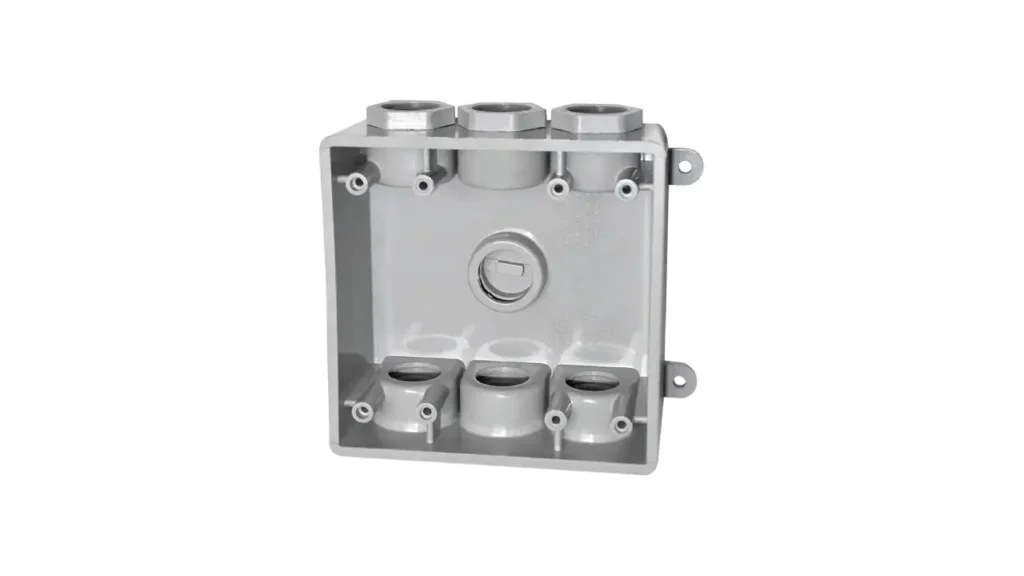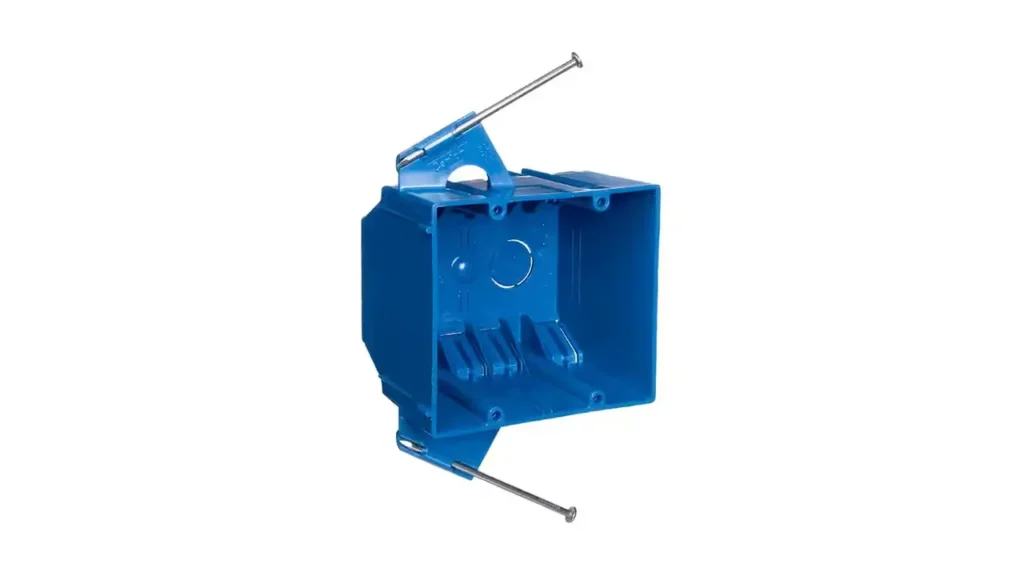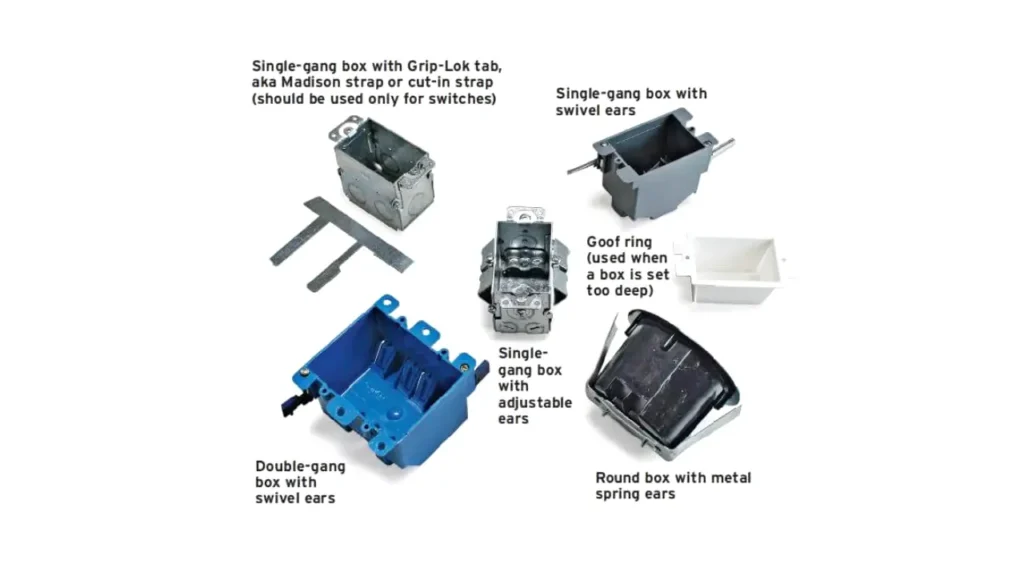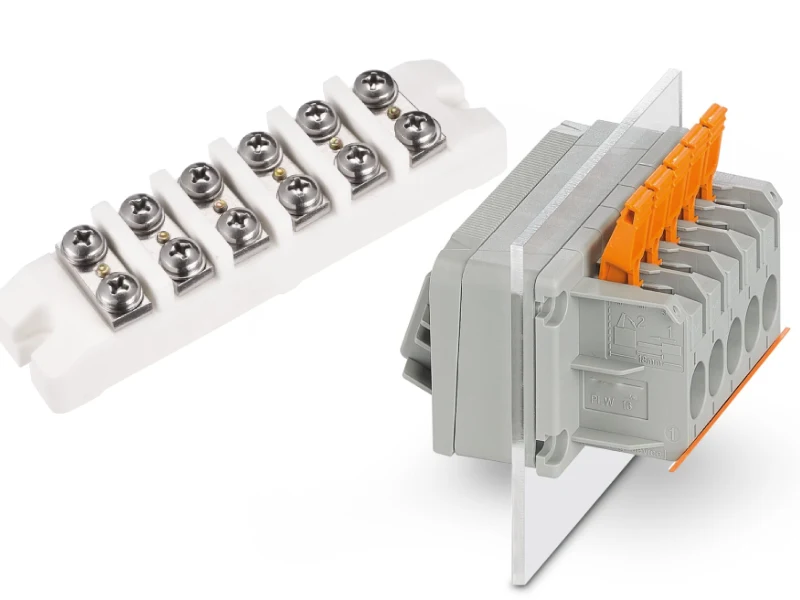This blog post will delve into the crucial distinction between single-gang and multi-gang junction boxes. We’ll explore the applications of each, highlighting their unique characteristics and when to choose one over the other. By grasping this key difference, you can ensure your electrical setup is both functional and compliant with safety standards, accommodating your current and future needs effectively.
What Is Junction Box Gang

In the industry of electrical installations, the term “gang” refers to the number of separate compartments or spaces within a junction box that are designed to house individual electrical devices.
Think of it like the number of slots available for switches, outlets, or other controls at a single location. A single-gang box has one such compartment, intended for one device, while a multi-gang box has two or more, allowing for the installation of multiple devices side-by-side.2
Understanding the “gang” of a junction box is crucial for planning and executing electrical wiring projects correctly. It dictates how many devices can be installed in a specific location and, consequently, the size and type of junction box needed. Choosing the right number of gangs ensures both functional convenience and compliance with electrical codes, as it provides adequate space for wiring and safe installation of multiple controls or outlets in a unified manner.
Types of Junction Box Gang
Understanding the different types of junction box gangs is essential for planning any electrical installation, as it directly impacts the number of devices you can install in a specific location. The “gang” of a junction box simply refers to the number of individual compartments within the box, each designed to house a single electrical device.
Here are the common types based on the number of gangs we offer.
Single-Gang Junction Boxes
A single-gang junction box features only one compartment and is designed to accommodate a single electrical device. This could be a single light switch, a single electrical outlet, a data jack, or a similar standalone control or connection point.
These are the most common type of junction box found in residential settings for individual device installations. Their compact size makes them suitable for situations where only one electrical function is required at a particular spot on a wall or surface.
Two-Gang Junction Boxes

A two-gang junction box contains two separate compartments within a single enclosure. This allows for the installation of two electrical devices side-by-side. Common applications include a light switch and an outlet in the same location, two light switches controlling different fixtures, or a combination of a switch and a dimmer.
Using a two-gang box provides a clean and organized way to manage multiple controls or connections in one convenient location, reducing the need for multiple individual boxes.
Three-Gang Junction Boxes

Expanding on the concept, a three-gang junction box offers three individual compartments within one unit. This configuration is useful when three separate electrical devices need to be installed together.
Examples include controlling multiple lighting circuits from one point, having a combination of switches and outlets, or integrating lighting controls with fan speed regulators. Three-gang boxes help to consolidate several functions into a single wall plate, improving aesthetics and simplifying wiring compared to using three separate single-gang boxes.
Four-Gang and Larger Junction Boxes
Junction boxes with four or more gangs are available for installations requiring a higher density of electrical devices in one location. These larger boxes can accommodate multiple switches, outlets, communication jacks, or any combination thereof.
They are often used in commercial settings or in residential areas where centralized control of numerous functions is desired, such as home theater setups or control panels for automated systems. While less common than single or double-gang boxes in typical residential wiring, they provide a solution for complex electrical layouts requiring multiple adjacent devices.
Here is the table showing the widely applied gang junction boxes in the market:
| Number of Gangs | Name | Description | Common Applications |
| 1 | Single-Gang Junction Boxes | Features only one compartment, designed for a single electrical device like a switch, outlet, or data jack. These are common for individual device installations. | Single light switch, single electrical outlet, standalone control. |
| 2 | Two-Gang Junction Boxes | Contains two separate compartments within one enclosure, allowing for two devices side-by-side, such as two switches, a switch and an outlet, or a switch and a dimmer. Provides organized management of multiple controls in one location. | Light switch and outlet together, two switches for different lights, switch and dimmer combination. |
| 3 | Three-Gang Junction Boxes | Offers three individual compartments in a single unit, useful for installing three separate devices together. Examples include controlling multiple lighting circuits, combinations of switches and outlets, or integrating lighting controls with fan speed regulators. | Controlling multiple lighting circuits from one point, combination of switches and outlets, lighting controls with fan speed. |
| 4+ | Four-Gang and Larger Junction Boxes | Available for installations requiring a higher density of electrical devices in one location. These can accommodate multiple switches, outlets, communication jacks, or combinations thereof. Often used in commercial or specialized residential settings for centralized control of numerous functions. | Home theater setups, control panels for automated systems, commercial control panels with multiple switches and indicators. |
What is the Purpose of a Gang Junction Box
Understanding the purpose of a gang junction box is fundamental to safe and organized electrical installations. These enclosures serve as central connection points for multiple wires, ensuring electrical continuity and protection.
The number of “gangs” dictates how many individual devices can be housed and wired at a single location. Here’s a look at the primary purposes of these versatile electrical components.
Providing a Central Wiring Point
A primary purpose of a gang junction box is to serve as a centralized location where multiple electrical wires can be safely connected or branched. Instead of having numerous scattered wire connections, the junction box provides a contained and organized space for these connections to occur, ensuring electrical continuity for various circuits and devices.
Housing and Protecting Electrical Connections
Gang junction boxes are designed to enclose and protect electrical connections from environmental factors such as dust, moisture, and physical damage. This protective housing is crucial for preventing short circuits, electrical shocks, and other hazards that could arise from exposed or improperly managed wiring.
Facilitating Device Installation
The “gang” feature of these boxes directly facilitates the installation of multiple electrical devices in one location. Whether it’s switches, outlets, dimmers, or data ports, a multi-gang box provides the necessary mounting points and wiring space to neatly integrate several devices into a single wall or surface area.
Ensuring Code Compliance and Safety
Electrical codes in most regions mandate the use of junction boxes for all wire splices and connections. Gang junction boxes help ensure compliance by providing a safe and accessible enclosure for these connections. This not only protects the electrical system but also allows for future inspection, maintenance, and modifications as needed.
How to Choose Suitable Gang Junction Boxes

Selecting the appropriate gang junction box is crucial for a safe, efficient, and code-compliant electrical installation. The number of gangs needed directly correlates with the number of devices you intend to install in a specific location. However, several other factors also play a significant role in making the right choice. Here’s a guide on how to choose suitable gang junction boxes for your project.
Determine the Number of Devices
The most fundamental step is to identify the exact number of electrical devices you plan to install in a particular location. Each switch, outlet, dimmer, or data port will require one gang within the junction box. Accurately counting these devices will directly dictate whether you need a single-gang, two-gang, three-gang, or larger box to accommodate them all neatly and safely.
Consider Future Needs and Expansion
While planning for your current requirements is essential, it’s also wise to consider potential future needs. If you anticipate adding more devices or modifying your electrical setup in the future, opting for a slightly larger gang box than currently needed can provide valuable flexibility. This foresight can save you the hassle and expense of replacing a smaller box with a larger one down the line.
Evaluate Box Volume and Wiring Space
Beyond the number of gangs, consider the internal volume of the junction box. Different devices and wiring configurations require varying amounts of space. Ensure the box you choose has sufficient depth and overall volume to comfortably accommodate all the wires, connectors, and devices without overcrowding. Overfilled boxes can lead to overheating and make future work difficult.
Assess the Mounting Location and Type
The location where you intend to install the junction box will influence the type of box you need. Wall-mounted boxes for switches and outlets differ from ceiling boxes for light fixtures. Additionally, consider the construction of the wall or ceiling (e.g., drywall, plaster) and choose a box that is compatible with the mounting method. Options include boxes with mounting ears for new construction and old work boxes with clamps for existing walls.
Conclusion
When tackling electrical projects, understanding the concept of “gang” in relation to junction boxes is crucial. The term “gang” simply refers to the number of separate compartments or spaces within a junction box designed to house individual electrical devices like switches, outlets, or data connections. Recognizing the difference between single-gang and multi-gang boxes is the first step in selecting the appropriate enclosure for your wiring needs.
Single-gang junction boxes are designed to accommodate a single electrical device. These are commonly used for individual light switches, single electrical outlets, or standalone control panels. Their compact size makes them ideal for situations where only one connection point is required. Multi-gang boxes, on the other hand, feature two or more compartments, allowing for the installation of multiple devices in one location, such as a light switch next to a dimmer or a combination of outlets and data ports.
For projects requiring multiple connection points in a concentrated area, multi-gang boxes offer a streamlined and efficient solution, reducing the need for multiple individual boxes and simplifying wiring. At Linkwell Electrics, we offer a comprehensive range of wholesale gang junction boxes, from single to multiple gangs, ensuring you have the right enclosures for all your electrical installations. Contact us today for competitive pricing and high-quality products.




